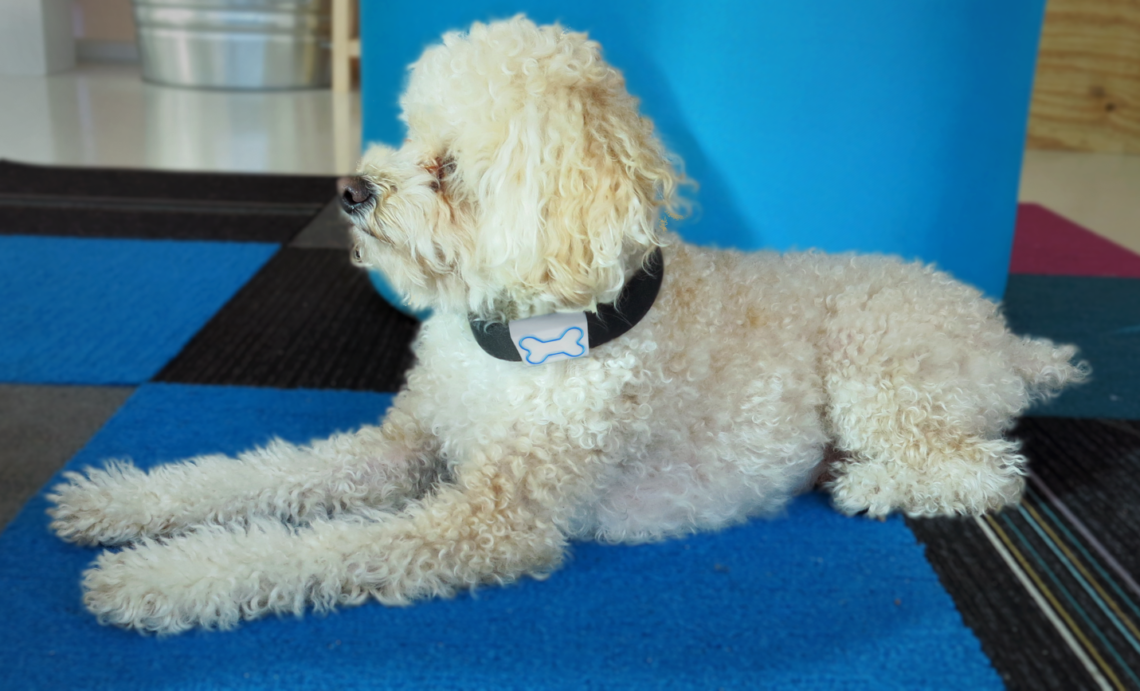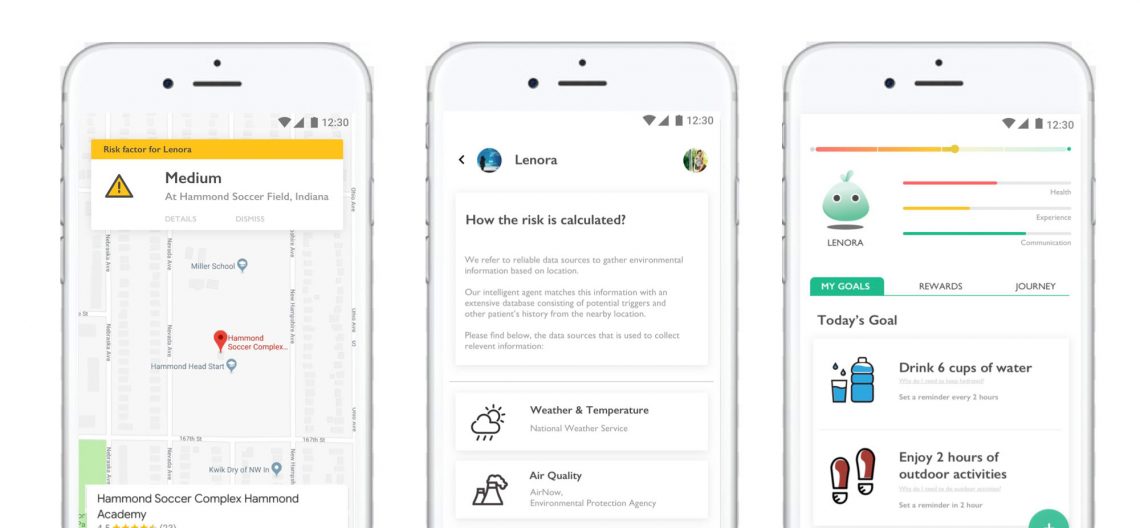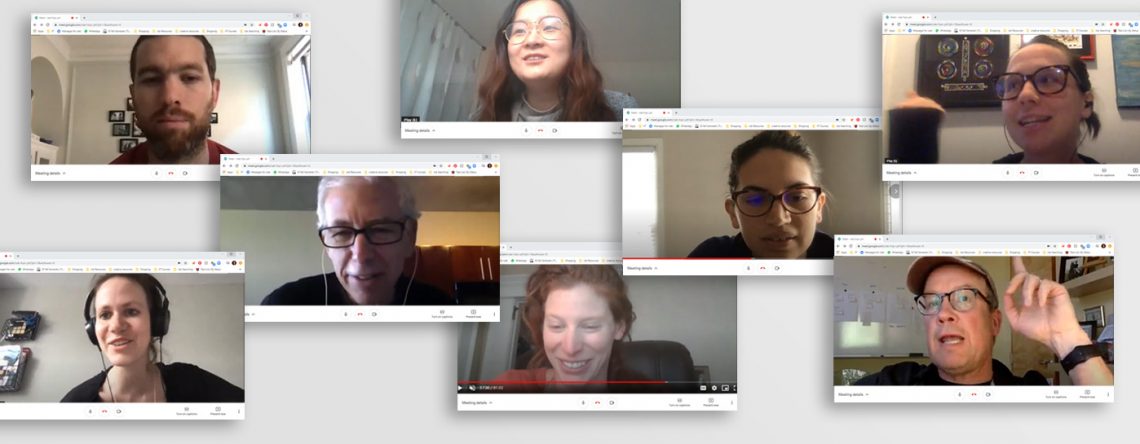
There are roughly 63.4 million dog-owning households in the United States, creating tens of millions of relationships that, while unique and complex, are ultimately symbiotic, fulfilling both needs of the species. A group of students at the Institute of Design, however, have asked the question: How can technology further improve the relationship between canine and homosapien?
Their answer is Pooch, a wearable device for dogs that tracks its location and behaviors, while connecting users to other local dog owners. The device was created for Third Wave, the Chicago-based company behind CareBand, a wearable device for people living with dementia that, through tracking and geofencing features, aims to keep people safe while providing more autonomy.
CareBand similarly worked with ID in 2021. But as Third Wave Chief Executive Officer Adam Sobol explains, the opportunity to find new uses for CareBand’s technology was of huge interest.
By interviewing and surveying dog owners, walkers, and trainers, the team of ID students generated a host of concepts for Pooch aimed not just supporting the dog, but the owner as well. Given that dog adoptions rose significantly during the COVID-19 pandemic, it became clear that there was a cohort of new owners who could use help.
“A lot of people who recently adopted pets didn’t know much about how to take care of their pet, they didn’t anticipate how much work it would require, especially with all the transitions throughout the pandemic,” says Roxanne Hoffman (MDes + MBA 2022), one of the students in the workshop. “New dog owners may not know what they need to do, and there are certain kinds of technologies that give us awareness about our pets and make us better caretakers.”
From its research, the team extrapolated that there are two forms of dog ownership: emotional, where the companionship fulfills psychological needs, and functional, by which ownership serves more practical purposes. Additionally, the team identified four values informing its designs: motivation, acclimation, clarity, and peace of mind.
It was important to create a product led by all four values and catered to both ownership sensibilities, not because owners fall into one category or the other, but because, as Hoffman explains, most owners show traits of both. But often, existing technologies and apps only serve one of these dispositions.
“We looked at the emotional and functional Venn diagram of existing products on the market,” says Hoffman. “Humans have similar needs but in other ways have clashing needs. Humans are very social animals and dogs are very regimented animals. Dogs love to be trained and of course people want to feel connected to their dogs, especially during the pandemic. Those needs are completely different. How do we honor both?”
The end result of the team’s labor was a device and app that goes well beyond simple pet tracking. Instead of using the location tracking technology just for locating the user’s dog, it can enable owners to better assess their dog’s behaviors and intervene when necessary. It even provides messages to the owner to further enhance the relationship between owner and pet.
Constrained by the short timespan of a semester and the physical limitations presented by a pandemic, the product requires further testing, specifically in making a physical product that can adapt to different kinds of collars and different dog breeds. But the plan, according to Sobol, is to further develop the concept at Third Wave using its existing technology suite.
“I see the value in that a lot of the features are already in the technology suite we have, it’s just about designing the device to fit on a pet instead of a human,” says Sobol. “We’re working on the hardware as we speak, and we’re growing our mailing list and getting folks lined up for a beta test—it’s extremely exciting to imagine the possibilities for a tech-enhanced collar to strengthen the dog and owner relationship.”
For more information, check out the Pooch information site.


